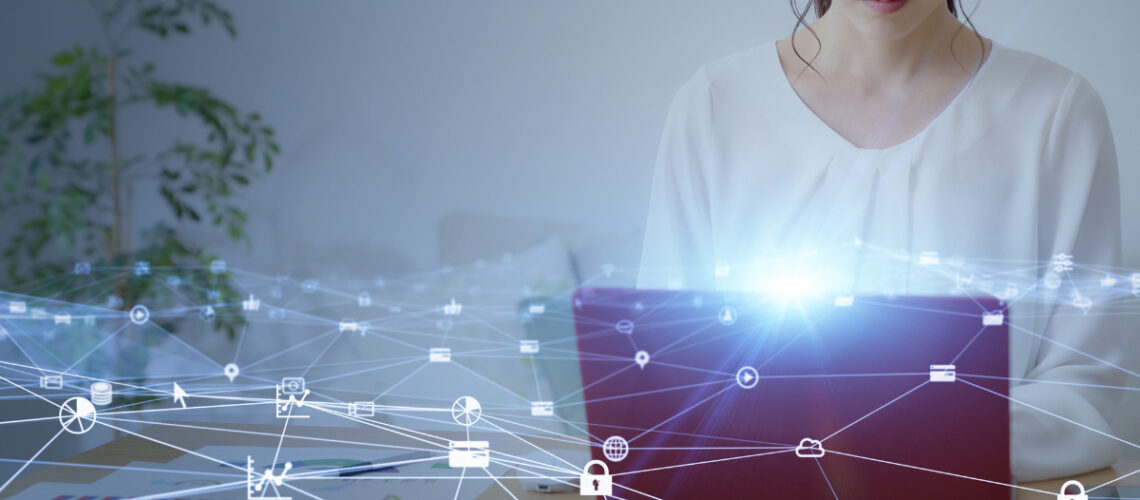In the wake of global changes brought about by the COVID-19 pandemic, remote work has become the cornerstone of modern professional life. As we embrace this new normal, the significance of cybersecurity in the remote work landscape cannot be overstated. The shift from traditional office setups to decentralized work environments has opened up a myriad of challenges, making it imperative for organizations and individuals alike to fortify their digital defenses.
The Remote Work Revolution
The remote work revolution, catalyzed by unprecedented global events such as the COVID-19 pandemic, has transformed the very fabric of how we perceive and engage in professional endeavors. As office walls crumbled, giving way to virtual landscapes, the traditional 9-to-5 paradigm dissolved, making room for a more flexible, decentralized approach to work. Professionals, once tethered to physical office spaces, found themselves liberated by the digital frontier, where the constraints of geography became inconsequential. This revolution has not only redefined the workplace but has also fostered a paradigm shift in work-life balance, emphasizing autonomy and personalization.
Employees are no longer bound by the rigid structures of a daily commute, and geographical boundaries have become porous in the face of collaborative technologies. The remote work revolution is not merely a response to external circumstances but a fundamental reimagining of work dynamics, challenging long standing norms and fostering an environment where productivity is driven by outcomes rather than the physical presence within a defined workspace. This transformation, though not without its challenges, has ushered in an era where the essence of work transcends the confines of a traditional office, unlocking a world of possibilities for individuals and organizations alike.
Securing the Virtual Perimeter
In the traditional office setup, physical security measures formed the first line of defense against unauthorized access. In the virtual realm of remote work, this concept evolves into securing the virtual perimeter. Virtual Private Networks (VPNs) play a pivotal role in establishing a secure connection between remote workers and company networks. Encrypted tunnels created by VPNs not only shield data from prying eyes but also ensure a secure passage for remote workers to access company resources. It is crucial for organizations to implement robust VPN solutions and educate employees on their proper usage to fortify this virtual perimeter.
In the era of remote work, endpoints such as laptops, smartphones, and tablets serve as the gateways to an organization’s digital assets.
Securing these endpoints is paramount to overall cybersecurity. Endpoint protection solutions, including antivirus software and endpoint detection and response (EDR) tools, form a critical line of defense against malware, phishing attempts, and other cyber threats. Regular updates and patches must be applied diligently to mitigate vulnerabilities and ensure the resilience of endpoint security measures.
Employee Training and Awareness
As the boundaries between professional and personal spaces blur, employees become both the frontline defenders and potential weak links in the cybersecurity chain. Comprehensive training programs are essential to empower remote workers with the knowledge and skills necessary to navigate the digital landscape securely. These programs go beyond the conventional understanding of cybersecurity, encompassing best practices for securing home networks, identifying phishing attempts, and recognizing the evolving tactics of cybercriminals. Heightened awareness campaigns complement training initiatives, fostering a culture of vigilance and responsibility.
Simulated phishing exercises serve as invaluable tools, allowing employees to experience and learn from potential threats in a controlled environment. The goal is not only to enhance technical proficiency but also to instill a sense of ownership in each employee, making cybersecurity a shared responsibility. Regular updates on emerging threats, clear communication channels for reporting incidents, and accessible resources contribute to an ongoing culture of awareness. In the dynamic landscape of remote work, where individuals operate in diverse environments, the effectiveness of cybersecurity measures is intricately tied to the level of knowledge and consciousness among the workforce. As organizations invest in shaping a cyber-resilient workforce, they not only bolster their defenses against cyber threats but also contribute to the creation of a secure and empowered remote work ecosystem.
Collaboration Tools: Balancing Productivity and Security
The proliferation of collaboration tools such as video conferencing platforms, messaging apps, and file-sharing services has been a boon for remote teams. However, the convenience of these tools must be balanced with stringent security measures. End-to-end encryption, multi-factor authentication (MFA), and secure file transfer protocols are integral components in ensuring the confidentiality and integrity of sensitive information exchanged through collaboration tools. Organizations must carefully vet and configure these tools to align with their cybersecurity policies.
Continuous Monitoring and Incident Response
In the dynamic landscape of remote work, a proactive cybersecurity strategy extends beyond preventive measures. Continuous monitoring of network activities, user behavior analytics, and timely incident response mechanisms are indispensable. Rapid detection and mitigation of security incidents can minimize the impact of a potential breach. Organizations should invest in security information and event management (SIEM) solutions, conduct regular vulnerability assessments, and establish well-defined incident response plans to navigate the evolving threat landscape effectively.
A Resilient Future in Remote Work
As we navigate the new normal of remote work, cybersecurity stands as the linchpin for a resilient and secure digital future. Organizations must adopt a holistic approach, integrating technological solutions, robust policies, and comprehensive employee training programs. By securing the virtual perimeter, safeguarding endpoints, fostering employee awareness, balancing collaboration tools, and implementing continuous monitoring, businesses can fortify their defenses against the ever-evolving landscape of cyber threats. In this era of remote work, the path to a secure digital future requires not just adaptation but a proactive commitment to cybersecurity excellence.

